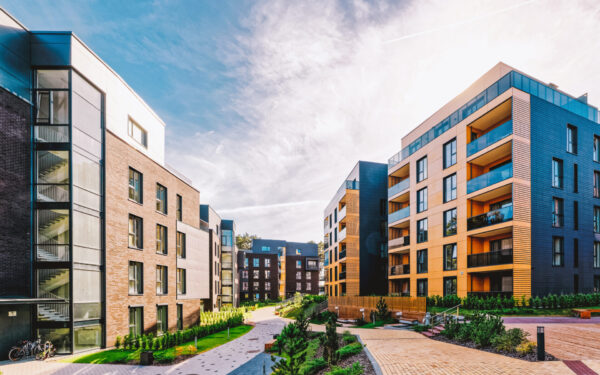This entry is written under the influence.
No, not that influence – I haven’t imbibed for over 40 years. I mean, the influence of Paul Kalbfleish.
Paul is one of the authors of The JOY Experiments, a book that sets out substantive principles and innovative ideas for “new urbanism,” or what Paul and his co-author, Scott Higgins, describes as “a new narrative, strategy, and creative process for building the great cities of the future.” Paul is also the author of a blog called The JOY Notes, that further explores the ideas set out in their book.
Although these principles and ideas are designed for cities, they apply just as well to smaller communities including, particularly, condominiums.
One of the principles Paul emphasizes is the re-sorting of the priorities we normally accord to the idea of communities as places where we,
- Live,
- Work, and
- Play.
Paul wants to turn that around and make play a greater – perhaps even the greatest – priority. He writes, “Cities that facilitate social interaction and collective joy [i.e., play] between citizens can become the destination of choice and improve social and economic prosperity.”
A principal impetus for this idea is the advancing epidemic of loneliness and isolation in our increasingly digital, distrusting, and divided society. A 2023 report by UNDP (the United Nations Development Programme) notes that over a third of all adults worldwide struggle with loneliness; and just two years earlier a report by Statistics Canada indicated more than 10% of Canadians age 15 and older “always or often” feel lonely. Both of those reports, and others, note that the epidemic of loneliness and similar stressors is diminishing not just people’s happiness and hope, but their general mental health as well as their accomplishments and satisfaction in life. Indeed, as one news article from a few years ago warns, loneliness and social isolation can lead to significant health concerns including “a higher risk of early death.”
Play – positive social interaction that involves enjoyment and fun – Paul suggests, helps overcome these issues.
So what’s this got to do with condominiums?
Condominiums are communities. Even a non-residential condominium plan creates a kind of community, but it is even more true for a residential development. Condominium home owners and residents must not only play, work, and live in close quarters with all their neighbours, they also have the added element of having to participate with them in the ownership, maintenance, and governance of their shared and individual portions of the property.
That is, in a condominium – like it or not – you have to relate to one another. You have to work together. And that all works so much better when you also have some basis for getting along with one another; in short, when you play together.
Many condominium boards may suppose that social interaction amongst the owners and residents of their community is not part of their mandate. After all, the primary focus of the most critical forms of guidance they receive from sources like the Condominium Authority of Ontario, various condominium related organizations, their professional advisors, and even the legislation itself, seems rarely, if at all, to be about this subject.
The Ontario Condominium Act, 1998 (the “Act”), itself states, “The objects of the [condominium] corporation are to manage the property and the assets, if any, of the corporation on behalf of the owners.” It has “a duty to control, manage and administer the common elements and the assets of the corporation,” and “a duty to take all reasonable steps to ensure that the owners, the occupiers of units, the lessees of the common elements and the agents and employees of the corporation comply with this Act, the declaration, the by-laws and the rules.”
That’s all pretty brass-tacks, hard-nosed sounding stuff. It’s about control, management, administration, and enforcement, not play, right?
And the Act’s other over 180 clauses and five regulations all appear to carry the same kind of message, dealing with meetings and maintenance, banking and borrowing, reserve funds and repairs, insurance and investments, and so on. The fuzzier, perhaps more humane matters of how and whether the neighbours like each other seems altogether apart from all those practical issues. But that’s not really the case. What that really is, is a very narrow and ultimately impractical interpretation of what the legislation is substantially about.
Just like the HR truism that employee engagement equates to increased business success, when condominium unit owners and residents feel like they are a part of the community – when they know and engage in positive ways with their neighbours, sharing in their enjoyment of the property, feeling welcome and wanted – they care about it more. The rules will be better obeyed. The property will be better maintained. The fees will be more willingly paid. The owners will take more interest and be more active in the condominium’s governance, and like it more. If that isn’t a sure way to support and carry out effective control, management and administration of the property, I am not sure what else could be.
That’s not the only reason that effective condominium communities also care about how their residents get along. Subsection 117(1) of the Act offers another reason. It says,
No person shall, through an act or omission, cause a condition to exist or an activity to take place in a unit, the common elements or the assets, if any, of the corporation if the condition or the activity, as the case may be, is likely to damage the property or the assets or to cause an injury or an illness to an individual.
No condition, and no activity or omission, likely to cause injury or illness to an individual. Like the condition of loneliness? Like the activity of isolation? Section 117(1) aims to prevent situations where a person could suffer harm—even if no one is directly or intentionally imposing those conditions.
Paul Kalbfleisch notes that creating spaces and opportunities for play, in the context of a city, not only helps individuals experience positive feelings of acceptance and other benefits that improve their health, well-being, and happiness. It also helps them avoid the serious mental and general health issues that isolation can cause. Additionally, it enables the city to foster a greater sense of collective identity, mutual trust, and consideration among its citizens. This, in turn, builds collective resilience to handle challenging and stressful situations, and encourages the innovation and invention needed for the community to prosper.
Why would play’s impact be any different in your condominium?
Condominiums, like every kind of community, ultimately rely on the well-being of their residents to be successful. That well-being is fundamentally impacted by the quality of connection that people have with their neighbours. Whether they have friends, associations, and fun, within the condominium can make a critical difference between being a community that merely exists and one that truly excels.
So, back to that question set out in the title of this entry: How does your condominium play?





